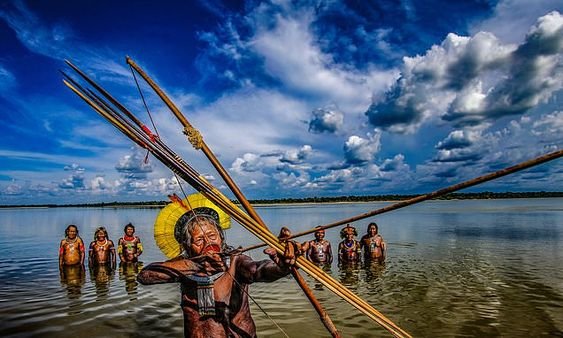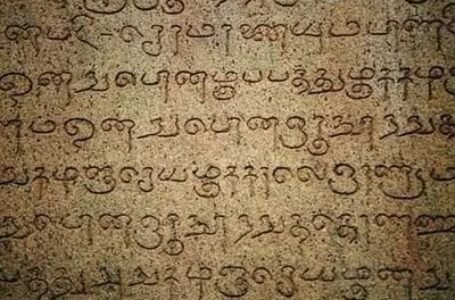Indigenous Resistance in Brazil: The Fight for Land Rights in The Amazon

Covering around 60% of Brazil’s territory, Amazon rainforest stands as on of the most iconic and vital landscapes on our planet. Its unparalleled richness in flora and fauna, along with its immense carbon storage capacity, makes it’s the cornerstone of Earth’s environment stability. The amazon rainforest is home to an estimated 390 billion individual trees representing around 16,000 species, many of them are not even found anywhere else. This biodiversity supports countless indigenous communities whose culture and livelihoods are deeply intertwined with the forest.

The state of Para in the Brazilian Amazon is where the Amazon river meets the sea. It is in this region, that the Tembe and Turiwara indigenous people have lived for generations now in the Acara Valley, this valley spans onto several municipalities. Over the period of time, their land, which is rich in the forest, rivers and fertile soil, was exploited for resources like timber, sugar cane and tobacco by colonial powers, primarily by the Portugal.
The Tembe and Turiwara have faced violence and exploitation throughout history, this includes colonization, forced displacement through a process called “aldeamento” and even epidemics. This led to a significant decrease in their populations, amounting to form of genocide. Additionally, African slaves were brought to the region to work on the sugar cane plantations. Even after the slavery was abolished, these communities were left without any support or compensation. Their decadents, known as quilombolas, recount how they built the sugar can mills by hand and were subsequently abandoned in the region.

From the mid-19th century to the late 20th century the Portuguese families wielded significant power and influence, both economically and socially. Even though slavery was abolished in 1888, these families continued to maintain control over vast expanses of land through a system of domination that extended beyond just economic exploitation. Their power was stimulated at the trading houses that were strategically situated along the river. These trading posts severed as hubs for commercial activities, where goods were exchanged, and transactions were being conducted. However, these posts also severed as center of control, where the Portuguese families exercised authority over the indigenous peoples, quilombolas, and also the riverine communities living in the vicinity.
The indigenous Turiwara and Tembe people, along with their other marginalized groups were often subjected to oppressive conditions akin to those experienced during the colonial era. They were kept as “agregados”, essentially laborer who worked under the dominion of the Portuguese families. This relationship was categorized by strict control and exploitation, they had very little regard for the rights or well-being of the workers. There was a system called “aviamento”, which was prevalent in many parts of Brazil during this time, it further entrenched the power dynamics. Under this system, workers were often indebted to the landowners or trader, who provided them with the essential goods such as foods, tools and clothing. However, the prices charged for these goods were often inflated, leading to perpetual debt bondage for the workers. In addition to the economic exploitation, the Portuguese families also engaged in territorial usurpation, which meant they seized land that rightfully belonged to the indigenous communities and other traditional inhabitant of the region. This dispossession was facilitated by legal loopholes or outright coercion, this further exacerbated the marginalization of this community.

After a period of time, much of the land amassed by these Portuguese families was sold off to the larger landowners and agribusiness interests, perpetuating a cycle of exploitation and displacement. The transition from traditional subsistence -based economies to large-scale commercial agriculture, particularly in crops like palm oil, coconut, timber, further marginalized the original inhabitants of the regions, disrupting their way of life and deepening socio-economic inequalities.
However, in the Acara Valley, the historical exploitation of indigenous and quilombola territories has taken on modern form, now they are primarily driven by the expansion of the palm oil monoculture and the installation of ore pipelines. Two major companies, which are Brasil Bio Fuels (BBF) and Agropalma have now completely dominated the industrial production of palm oils in the region. Despite projecting an image of modernity and environmental responsibility, these companies have been accused of land grabbing and environmental degradation. The expansion of these plantations has led to deforestation, water contamination and the loss of traditional livelihoods for local communities. These companies often operate on public lands using forged deeds, they even exploit resources without giving adequate compensation and the loss of traditional livelihoods for local communities.

To add to this destruction, the construction of pore pipelines such as those belonging to the companies like Hydro and Imerys, has further disrupted local communities and the ecosystems. The pipelines have caused conflicts and displacements, with communities feeling marginalized and restricted in their own territories. There are growing concerns over irregularities in the licensing and operation of these pipelines have prompted legal actions and calls for suspension of work.
Its been years now, the indigenous communities and the quilombola people have been vocal about the invasion of their territories by corporations and consequent environmental and social impacts. However, the corporations have often denied these impacts, offering social projects that fail to address the core issue which is the lack of territorial demarcation. Companies like Imerys have made occasional gestures like donating 500 hectares to the Tembe in the late 1990s, the majority of the land still remains in the hands of large corporations which are being supported by Brazilian state.

In response to this injustice, the Tembe and Quilombola communities initiated a fight in 2021 to reclaim their lands from BBF and Agropalma, they wanted to regain at least a portion of their territory from which they were historically expelled. With this, the Turiwara people publicly asserted their identity and land rights, they even joined forces with the Tembe in their struggle. A key force behind this resistance is the Indigenous Riverine and Quilombola Movement (IRQ), this movement aims to unify and garner support for their cause. This movement underscores the crucial role of women in the struggle and also highlights their dedication to securing rights for future generations.
These communities have further appealed to official agencies like FUNAI, INCRA, and ITERPA for immediate land demarcation. Even the peasant communities have joined the fight against the expansion of palm oil plantations, they stand in solidarity with indigenous and quilombola groups to protect their land and way of life.

In conclusion, the struggle for the land and their rights in the Acara Valley encapsulates a broader narrative of historical injustice, ongoing exploitation, and grassroots existence. From the colonial era to the present day, the indigenous communities, Quilombola, the riverine communities have faced displacement, exploitation and environmental degradation at the hands of the corporation and state actors.
As these communities continue to assert their identities, reclaim their lands and challenge the status quo, they underscore the importance of collective action in confronting the forces of exploitation and oppression. Their calls for land demarcation, environmental protection and respect for indigenous and Quilombola rights resonate not only in the Acara Valley but across Brazil and the entire world. Ultimately, their fight is for justice, dignity and preservation of ancestral territories. It is a reminder that the true wealth of the Amazon lies not only in its resources but also in the communities that have stewarded its land for generations.


